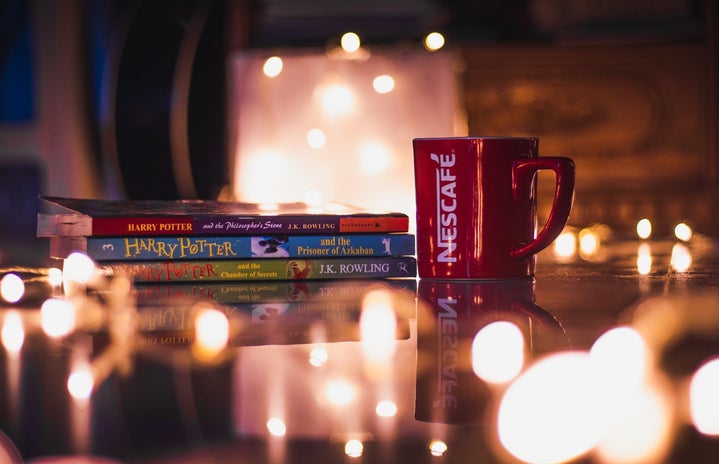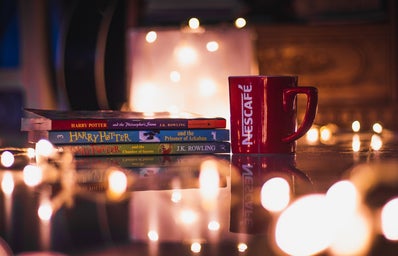Fantasy is a massive genre, swallowing speculative novels to fill an ever-growing canon of literature with magical themes. Because of its broad scope, it is crucial that we break down fantasy into subgenres, and that readers can recognize which of these types of stories they do and do not like; some readers may love one type of fantasy story, but hate another. Being able to recognize subgenres will help readers find books they love and avoid books they don’t.
Let’s begin with the three main overarching subgenres: high-fantasy, low-fantasy, and the fairy tale. High-fantasy is characterized by an otherworldly setting — it does not take place on Earth, but in a world of the author’s creation. It often also has an established (and detailed) magic system. Name of the Wind by Patrick Rothfuss is one of the first books I think of when I imagine high-fantasy.
Low-fantasy is the opposite of high-fantasy (I do wish there was a better term, because there is nothing inherently “low” about low-fantasy, and it is a fantastic and valuable subgenre). Low-fantasy takes place on Earth (or in our reality, at least), with magic added in. Harry Potter is one widely known low-fantasy story.
The last main subgenre is the fairy tale, which stands apart from high or low fantasy because of its intention to deliver a message. Fairy tales are often not included in the fantasy genre, as they are so recognizable on their own, but their ties to magic make them a relevant subject to mention.
Once you know if a story is “high” or “low” fantasy, you can find other classifications. Epic fantasy is a subgenre dedicated to lengthy tales with extraordinarily high stakes. Some consider epic and high fantasy to be the same, but I believe epic fantasy is rather distinct, and that not all fantasy stories set in another world can be considered “epic,” at least in the traditional sense of the word. Series like Lord of the Rings and The Stormlight Archives are epic fantasy.
Urban fantasy is likely the most popular subgenre under low fantasy. As the name insinuates, these stories take place in cities. These two genres are often considered to be the same, but as not all low fantasy tales take place in cities, I believe it is important to distinguish the two as well. The Mortal Instruments series by Cassandra Clare — though I do not necessarily recommend it — is an example of this. Magical realism is a kind of low fantasy as well. It is almost entirely realistic, other than some sort of “magic touch” to the story, and so takes place on earth.
Other ways to divide fantasy is to look at subgenres of content or focus. Romantacy, historical fantasy, dark fantasy, and science fantasy all highlight the style or secondary genre of the word. Romantacy, or romance-fantasy, is a genre where the romance is just as or more important than the fantastic plot. A good example of this is Sarah J. Maas’ A Court of Thorns and Roses.
Historical fantasy re-imagines history as it would be with magic (and therefore is a subtype of low fantasy). My favorite historical fantasy series is Blythewood, which takes place in the 1900s but has a wonderful cast of fae creatures and magical abilities. Dark fantasy includes grimmer themes, darker content, or even horror elements. For your dark fantasy recommendation: I absolutely adore Naomi Novak’s Scholomance, which features deadly and frightening creatures whose presence is well-incorporated into the plot.
Science-fantasy (not to be confused with science-fiction) is fantasy with science elements. It is an ongoing discussion whether Star Wars is science fiction or science fantasy… but I suppose it matters whether you believe midi-chlorians explain the Force, or whether you think it’s just powerful magic. That’s really the crux of fantasy — is there magic? How do you style your story around that magic?

Fantasy is a beautiful genre — it’s my favorite to read, for sure. But the categories of fantasy are important to be aware of if you like any style of it. I’ve seen some lovers of romance go into extraordinary epic fantasy novels and hate them because they weren’t looking for the page length and depth of world building that the epic fantasy has, and romance was not as highlighted as they wanted it to be. There are individuals who love high fantasy that find themselves disappointed in a low fantasy book because they prefer a world that was created, rather than a divergence from our own reality. I am all for trying new styles and learning your preferences, but being aware of the subgenres of fantasy allows you to understand your own wants when it comes to your reading goals. If in reading this, epic fantasy stuck out to you, give The Priory of the Orange Tree a try. If you’ve never heard of science fantasy and it sounds neat, take a look at Mistborn (though I warn caution with some of the themes of that one). If you’re salivating at the idea of romantasy… Well, there’s a plethora of those out there on the market right now. No matter what you like, I hope you can now pick out those styles best suited to your palate with ease. Happy reading!




